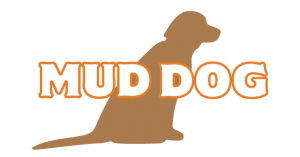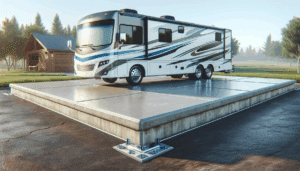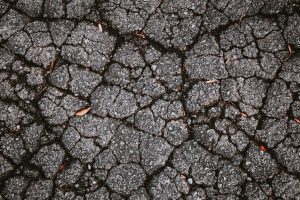Let’s face it, owning a home in Ogden means constantly balancing the checkbook against a never-ending list of repairs. Whether it’s the furnace acting up in the dead of winter or the roof looking a little tired, there’s always something demanding your attention—and your wallet.
The “Ogden Shift” and Your Driveway
You know exactly what I’m talking about. You walk out to the car with your morning coffee, maybe running a few minutes late, and you trip over that uneven ridge in the concrete where one slab has decided to sink an inch lower than the rest. It’s annoying. It’s ugly. And honestly? It’s a lawsuit waiting to happen if the delivery driver isn’t paying attention.
Living here in Northern Utah, we deal with some pretty aggressive freeze-thaw cycles. The ground freezes, expands, pushes everything up, and then thaws out, leaving gaps in the soil. Over time, that soil compaction and erosion leave your heavy concrete driveway floating over empty space. Gravity does the rest.
Suddenly, you’re looking at a sunken slab. The instinct for most folks is to think, “Well, I guess I have to tear this out and pour a new one.”
Stop right there. That line of thinking is going to cost you thousands of dollars you don’t need to spend.
Why Replacement is a Wallet-Killer
Let me explain why the traditional “rip and replace” method is so painful for your bank account. When you hire a crew to replace a driveway, you aren’t just paying for new concrete. You’re paying for the demolition of the old stuff. You’re paying for the hauling and disposal fees because that heavy concrete has to go somewhere. Then, you’re paying for the labor to frame, pour, and finish the new slab.
It’s a massive production.
And here’s the thing: New concrete isn’t cheap. Prices have skyrocketed in the last few years. If you opt for full replacement, you are essentially paying for a Cadillac solution when all you really needed was a tune-up.
Beyond the money, there’s the mess. Heavy machinery tearing up your yard, noise that makes the neighbors glare at you, and a driveway you can’t park on for weeks while the fresh pour cures. It’s a headache.
The Magic of Concrete Lifting
So, what’s the alternative? It’s called concrete lifting, though you might hear it referred to as Mud Jacking or slab jacking. It’s been around for a long time, but a lot of homeowners still look at me like I’m speaking Greek when I bring it up.
The concept is surprisingly simple. instead of destroying the concrete, we use the existing slab. We drill small holes—about the size of a penny or a quarter—into the sunken sections. Then, we pump a specialized mixture (a slurry or sometimes a polyurethane foam, depending on the specific job) through those holes.
This mixture fills the voids in the soil beneath the concrete. As the space fills up, pressure builds. And since the mixture has nowhere else to go, it pushes the concrete slab up.
It’s kind of like inflating an air mattress, but with a lot more structural integrity. We can control the lift precisely, bringing that sunken slab right back up until it’s perfectly level with the rest of the driveway.
The Numbers Don’t Lie
Okay, let’s get down to brass tacks. How much money does this actually save?
While every job is different based on the size of the slab and how far it has settled, the general rule of thumb is pretty consistent. Concrete lifting usually costs 50% to 70% less than replacement.
Think about that for a second. If you got a quote to replace your driveway for $6,000 (which is a pretty standard, if not low, number these days), lifting that same concrete might only cost you around $1,500 to $1,800.
That is a massive chunk of change left in your pocket. You could use that savings for:
- New landscaping to match your fixed driveway
- A weekend getaway (because you deserve it)
- Putting it into the emergency fund
Here is a quick breakdown of why the costs are so different:
| Cost Factor | Driveway Replacement | Concrete Lifting |
|---|---|---|
| Materials | High (New concrete, rebar, forms) | Low (Slurry/Grout mixture) |
| Labor | High (Demolition + Pouring + Finishing) | Low (2-3 person crew, few hours) |
| Disposal Fees | High (Hauling old concrete) | $0 (Nothing is removed) |
| Landscaping Repair | Likely (Grass/sprinklers often damaged) | None (Process is non-invasive) |
Time is Money, Too
We’ve talked about the cash, but what about your time? In our busy lives, convenience has a value all its own.
If you replace your driveway, you are looking at a construction zone in front of your house for several days. Once the pour happens, you generally can’t drive on that concrete for at least 7 days, sometimes longer depending on the weather and the mix. That means parking on the street, lugging groceries halfway down the block, and hoping nobody side-swipes your car overnight.
With mud jacking or concrete lifting, the timeline is drastically different.
Most residential jobs take a few hours. That’s it. We show up in the morning, and by the time you’re home from work, the job is done. Even better? You can usually walk on it immediately and drive on it later that same day.
There’s no waiting for the concrete to cure because we didn’t pour new concrete; we just supported the old stuff.
Safety and Liability: The Hidden Costs
You know what’s more expensive than driveway repair? A lawsuit.
I hate to be that guy, but it’s the reality we live in. If you have a slab that has sunk two inches, you have created a major trip hazard. Maybe you know it’s there and you step over it every day. But what about the Amazon delivery driver? What about your neighbor’s kid chasing a basketball? What about your elderly aunt visiting for the holidays?
If someone trips on your uneven concrete and breaks a wrist—or worse—you are liable. Homeowner’s insurance might cover it, but then your premiums go through the roof.
By ignoring the problem because you think it’s “too expensive to fix,” you are actually gambling with a much higher financial risk. Since driveway leveling is so affordable compared to replacement, it’s a cheap insurance policy against injury claims.
Plus, let’s be honest—shoveling snow in Ogden is hard enough. Have you ever hit an uneven concrete edge with a snow shovel at full speed? It punches you right in the gut. Fixing the slab saves your ribs, too.
Curb Appeal on a Budget
If you are thinking about selling your home in the near future, the condition of your driveway matters more than you think. It is the very first thing a potential buyer sees when they pull up.
A cracked, sunken driveway screams “deferred maintenance.” It makes buyers wonder, If they didn’t fix the driveway, what else is broken inside the walls? It’s a red flag that gives them leverage to negotiate a lower price.
On the flip side, a level, safe driveway looks well-maintained. It suggests that you care for the home.
You could spend $10,000 renovating a bathroom to add value, or you could spend a fraction of that lifting your concrete to ensure the exterior looks pristine. The ROI (Return on Investment) on concrete lifting is incredibly high because it restores the functionality and aesthetics of the home without the high price tag of major construction.
Is My Driveway Too Gone?
This is a fair question. Is every driveway a candidate for lifting?
Honestly, no. There are times when the concrete is just too far gone. If the slab is crumbled into a million pieces like a jigsaw puzzle, lifting it isn’t going to work. You need a solid slab to lift.
However, you would be surprised at what can be saved. Even slabs with a clean crack through the middle can often be lifted and leveled. Once it’s back in place, we can caulk the crack, and it looks good as new.
Here are the signs you are a perfect candidate for Mud Dog Jacking services:
- The slab is largely intact but has sunk on one side.
- You hear a hollow sound when you tap on the concrete (that means there’s a void underneath).
- Water pools in spots where it didn’t used to.
- Steps or porches have pulled away from the foundation.
The Environmental Angle
I know we’re talking about saving money, but let’s talk about saving the planet for a quick second. (I promise I won’t get too preachy).
Concrete production is pretty hard on the environment. It uses a lot of energy and releases a lot of CO2. When you tear out a driveway, that old concrete ends up in a landfill, and new resources are used to pour the replacement.
By choosing concrete lifting, you are essentially recycling your driveway. You are keeping debris out of the dump and reducing the demand for new cement production. It’s a green solution that happens to keep more green in your wallet. That’s a win-win situation if I’ve ever heard one.
Why DIY Solutions Usually Fail
I have to address the hardware store warriors out there. I get it. I love a good DIY project, too. You might have seen those cans of expanding foam or bags of self-leveling cement at the big box store and thought, “I can handle this.”
Here is the problem: Surface patching does not fix the root cause.
If you pour self-leveling cement on top of a sunken slab, you are just adding more weight to a slab that is already sinking because the soil underneath is weak. The extra weight will likely make it sink faster.
As for the DIY foam kits? They can be a disaster. It is incredibly difficult to control the expansion of that foam without professional equipment. You might over-lift the slab (which you can’t undo), or the foam might follow the path of least resistance and end up bubbling out into your lawn or sewer drain.
Professionals use hydraulic pumps and specialized materials that are designed to handle the load of a vehicle. The stuff in the can is great for sealing a window draft, but not for holding up a Ford F-150.
Why Mud Dog Jacking?
Look, there are a few ways to lift concrete, but doing it right requires local expertise. We aren’t just a franchise following a corporate manual from some office in Florida. We are Mud Dog Jacking, and we know Ogden.
We understand the soil types here. We know how the Weber River drainage affects the groundwater, and we know exactly how the freeze cycles along the Wasatch Front mess with foundations.
When we come out to look at your driveway, we aren’t trying to sell you something you don’t need. If your driveway is shattered and truly needs replacement, we will tell you. But more often than not, we can save you thousands by lifting what you already have.
We use top-tier equipment and materials to ensure that when we lift a slab, it stays lifted. We aren’t interested in a quick fix that sinks again in six months. We want you to be happy with your driveway for years to come.
Don’t Let Your Driveway Drain Your Bank Account
At the end of the day, your home is your biggest investment. Keeping it safe and looking good shouldn’t require taking out a second mortgage. Concrete lifting is the smart, economical, and fast way to handle sunken concrete. It keeps your family safe, boosts your curb appeal, and leaves plenty of budget left over for the things that actually matter.
Don’t wait until someone trips or the sinking gets so bad the concrete cracks beyond repair.
If you’re tired of looking at that uneven driveway and want a solution that makes sense for your wallet, give us a call. 801-644-9122.
Request a Free Quote today, and let’s get that driveway back on the level.




